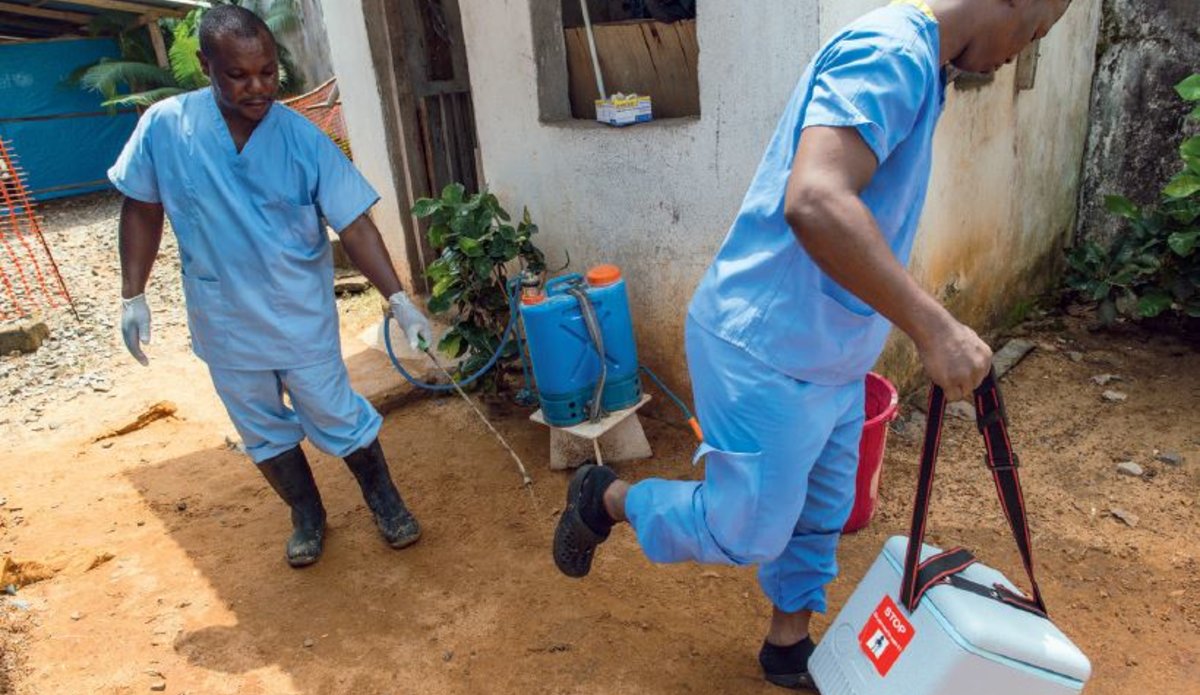The story of UNMIL [Book]: Ebola in the counties

On 16 August 2014, the body of a dead man was found on the streets of Greenville, Sinoe County. It was the first suspected death of the Ebola Virus Disease in the county, which until then was considered Ebola-free. The nearest laboratory that could test samples for Ebola was in Margibi County, seven hours away if the roads were good, but often a two-day trip at that time of the year. It took three days until the county health officer received the confirmation: The man had died of the Ebola.
UNMIL’s field office – at that time the only UN presence in the county – supported the fight against Ebola in various ways. Staff members participated in all Ebola-related meetings to support coordination of local efforts and planning. The team prepared and distributed outreach materials both to the local government and throughout the county via patrols by military observers, with awareness posters attached to each UNMIL vehicle. As Sinoe County had very poor internet access, the field office used its own IT infrastructure to search for latest information and guidance materials on Ebola, and distributed CD copies to local counterparts.
County health volunteers received training and equipment through an UNMIL quick-impact project. UNMIL liaised with UN agencies to facilitate the provision of food to isolated individuals suspected of having Ebola and their contacts and served as the main coordinator until the arrival of World Health Organization representatives and the UN Mission for Ebola Emergency Response (UNMEER) at the end of November 2014.
A major challenge for the treatment of patients in Sinoe was the absence of an Ebola Treatment Unit (ETU) where Ebola patients and individuals suspected to have been infected with the virus, could be isolated and treated. Instead, both were kept in a makeshift shelter erected out of sticks and tarpaulin as a temporary solution months before then.
An international NGO had been tasked to build an ETU, but struggled with logistical and organizational challenges. With still no completion date in sight by end of November and concerns that Sinoe may become the new hotspot for Ebola in Liberia, the field office supported the initiative of the Swedish MSB in building a temporary ETU that met all minimum standards. UNMIL and UNICEF contributed additional tents and water tanks.
Sinoe County’s last Ebola victim died in that ETU on 29 December 2014. The county was declared Ebola-free 42 days later.
 UN
UN United Nations Peacekeeping
United Nations Peacekeeping

![The story of UNMIL [Book]: Ebola’s impact on UN staff The story of UNMIL [Book]: Ebola’s impact on UN staff](https://unmil.unmissions.org/sites/default/files/styles/gallery_image_thumb/public/field/image/unmil_security_guards_checking.jpg?itok=QBlB5QX8)



